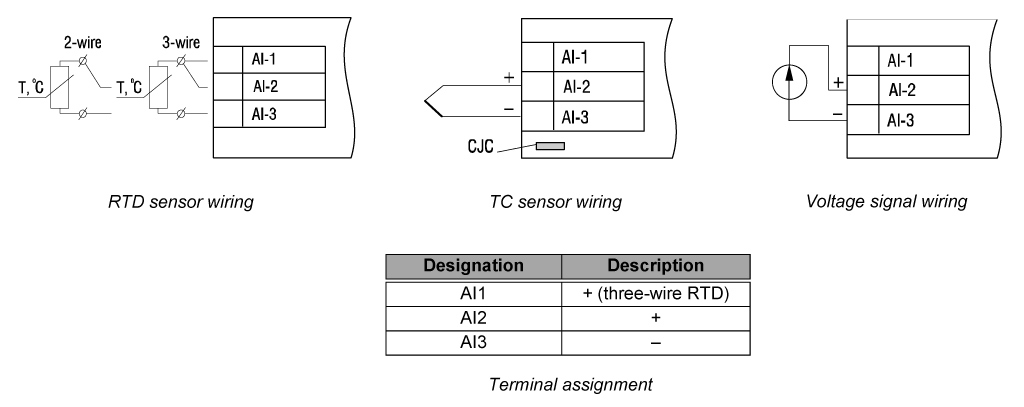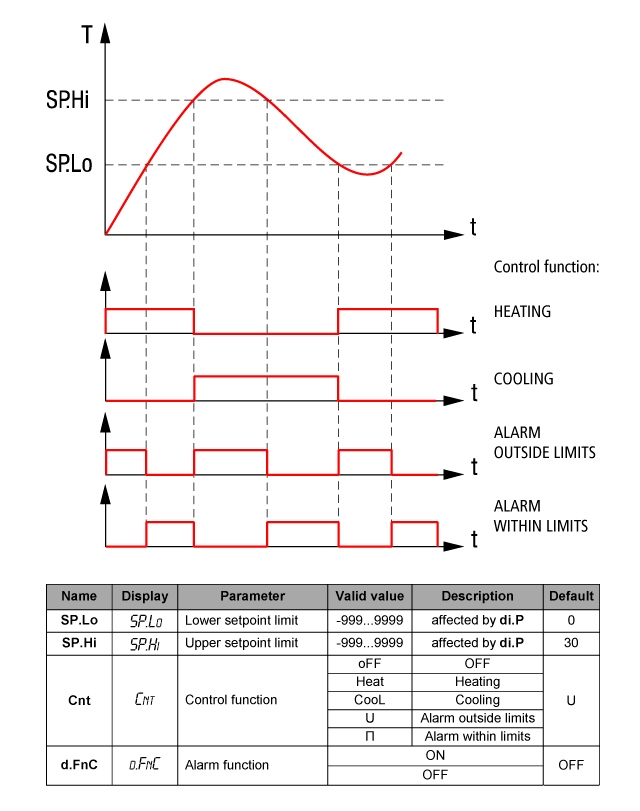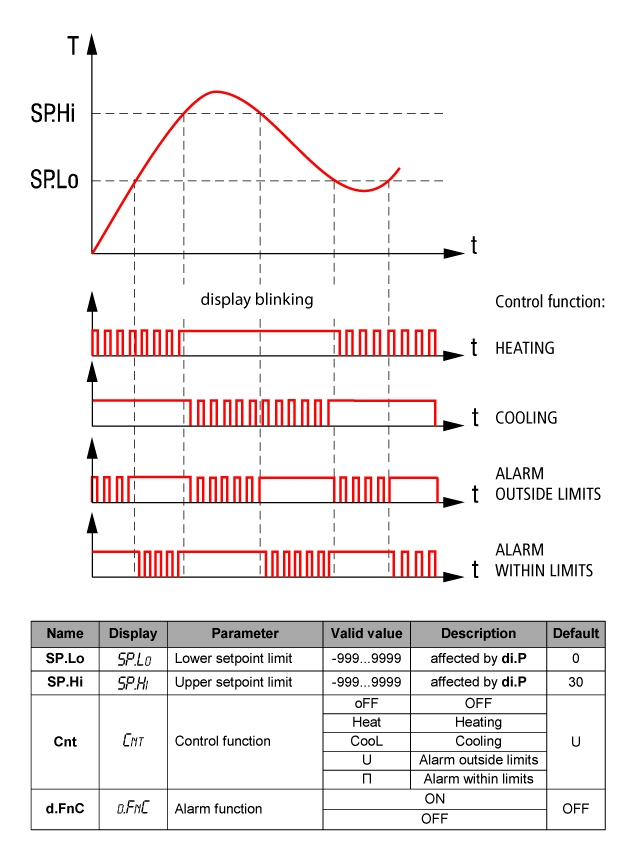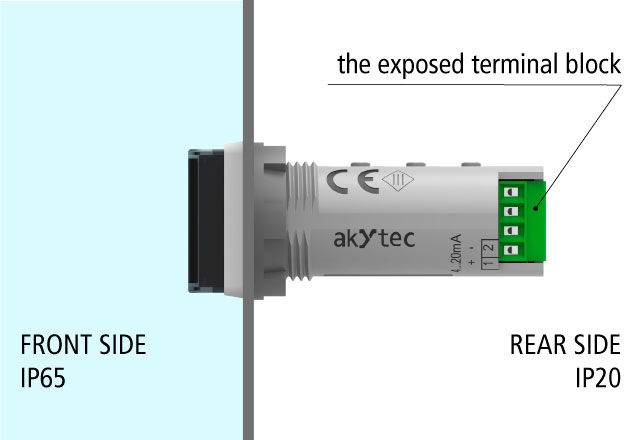- - Measuring and displaying the signal values received from various RTDs and thermocouples (see Supported sensors)
- - Linear voltage signal scaling
- - Adjustable decimal point position
- - ON/OFF control with an NPN output
- - Display range -999…+9999
- - Square root function (for special transmitters)
- - Digital filter
- - Alarm function (blinking when the exceeding set points)
- - Error indication when exceeding the measuring limits
- - Error indication when wire break or short circuit
- ePLAN
- STEP Model
- What type of signal does the Temperature Indicator ITP16 support? How should I connect it?
- Can I connect the Temperature Indicator ITP16 to a temperature sensor PT100 directly or should I use a 4-20 mA converter?
- Can I connect several ITP16 Temperature Displays to the common temperature sensor? How should I connect them, in series or in parallel?
- I have connected the ITP16 but it doesn’t switch on, what should I check?
- I have connected a sensor to the ITP16, but the temperature on the display is far from the correct one, what should I check?
- What voltage supply does the ITP16 require?
- What software do I need to program the ITP16?
- Should I program 4 20ma loop powered display before or after the installation?
- Can I switch on/off the digital output of the ITP16 depending on the signal value at its input?
- How can I scale the measuring limits of the ITP16?
- If I need to show a percentage value, what should the ITP16’s measuring limits be?
- What is the alarm function? How can I use it?
- What is the IP rating of this display?
- What is the ITP16’s input resistance?
- In what colors is the display available?
- What conductor cross section is permitted?
- What is the ITP16’s accuracy? What about its sample time?
- Is the ITP16 protected against overload?
- Is there any galvanic isolation between the input, the output, and the voltage supply circuit?
- What is the maximum distance to connect an RTD or a TC signal to the ITP16?
- What diameter should the mounting cutout be to install this display?
- Do you have an ePLAN 3D model of this display?
The ITP16 is a temperature indicator for monitoring and control of industrial processes. This device has a compact, standardised design and fits into a standard 22.5 mm borehole for signal lamps. This provides quick and easy installation and many displays can be accommodated in a control cabinet door or on a panel.
This display features a digital output and a configurable analog input. The device can process linear voltage signals, signals from various RTDs (Pt100, Pt1000, and others) or thermocouples (K, J, and others). Before displaying, the input signal can be filtered if needed. There is also an optional square root function available. The NPN transistor output can control a load up to 200 mA / 42 V DC, which makes it possible to implement on-off control. This output can also be used as an alarm output.
The process indicator ITP16 supports an alarm function. If this function is on, the display starts blinking with the frequency of about 2 Hz when the process value exceeds the set points.
The device requires 24V DC auxiliary voltage. The enclosure can be operated in the temperature range between -40 and +60 °C.
Functions and features:
Areas of application:
The temperature display ITP16 is particularly suitable for the fast and easy installation of visual display systems for various thermal processes. The ITP16's compact size ensures that it can be used on-site as an additional display unit for measurement values or as part of a complex visual display system.
| Power supply | 24 (10…30) V DC |
| Power consumption, max. | 1 W |
| Input | 1 |
| Input signal | See Supported sensors |
| Sampling time | 2 s |
| Accuracy | ±(0.25% FS) |
| Temperature influence | ≤ 0.2% / 10 °C |
| Input resistance | |
| 0-1 V, -50…+50mV | ≥ 250 kohm |
| Output | 1 |
| Type | NPN transistor |
| Loading capacity | 200 mA, 42 V DC |
| Enclosure | for panel mounting |
| Character height | 14 mm |
| Dimensions | 48 x 26 x 65 mm |
| Weight | approx. 30 g |
| Ambient temperature | -40…+60 °C |
| Protection class | III |
| Relative humidity | up to 80% (at +35 °C, non-condensing) |
| ITP16 |
|
ePLAN_ITP16 (*.zip 10.7 mb)
ePLAN_ITP16-G (*.zip 10.8 mb)
|
|
|
STEP_ITP16 (*.zip 2.76 mb)
STEP_ITP16-G (*.zip 2.78 mb)
|
|










